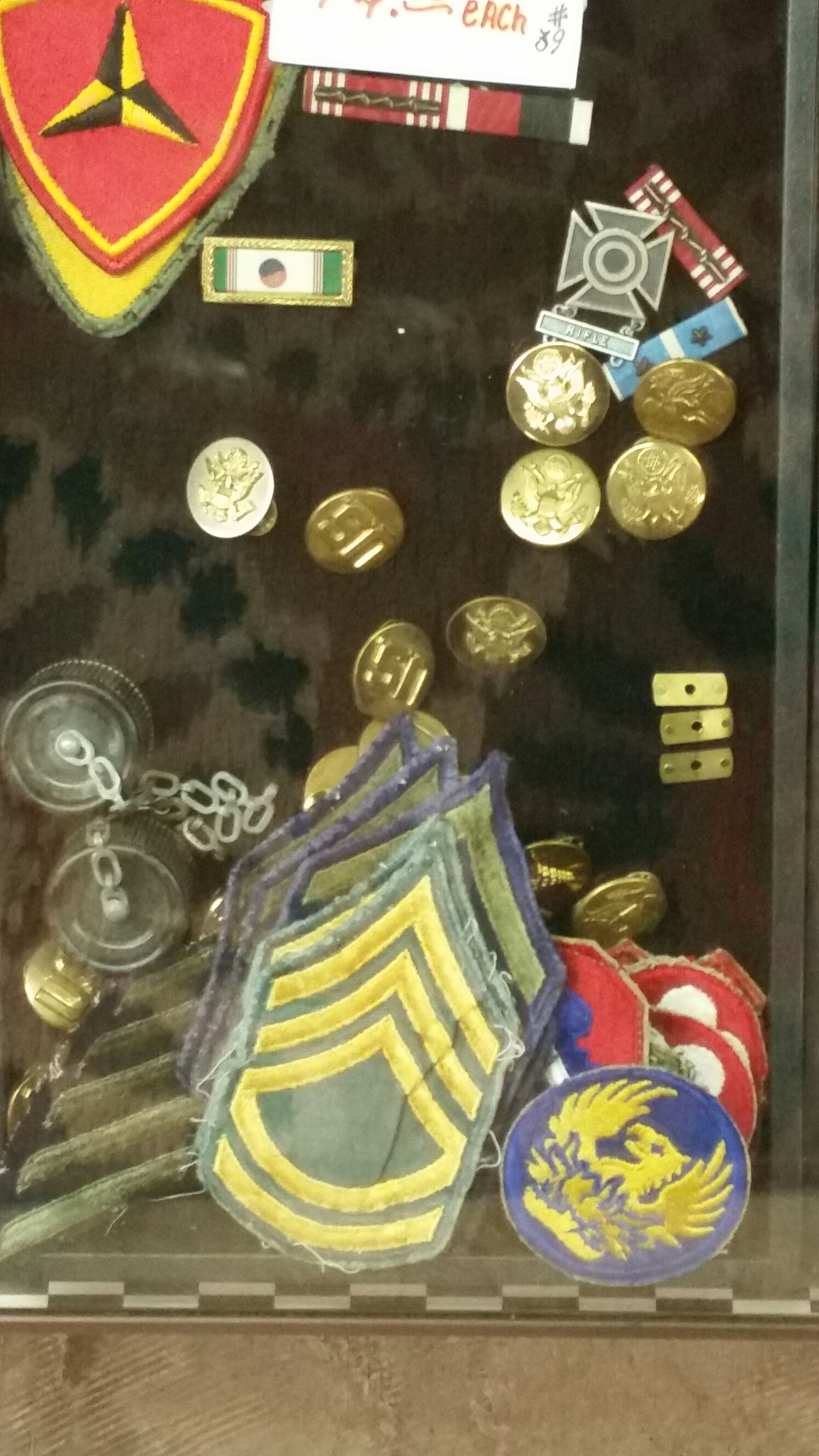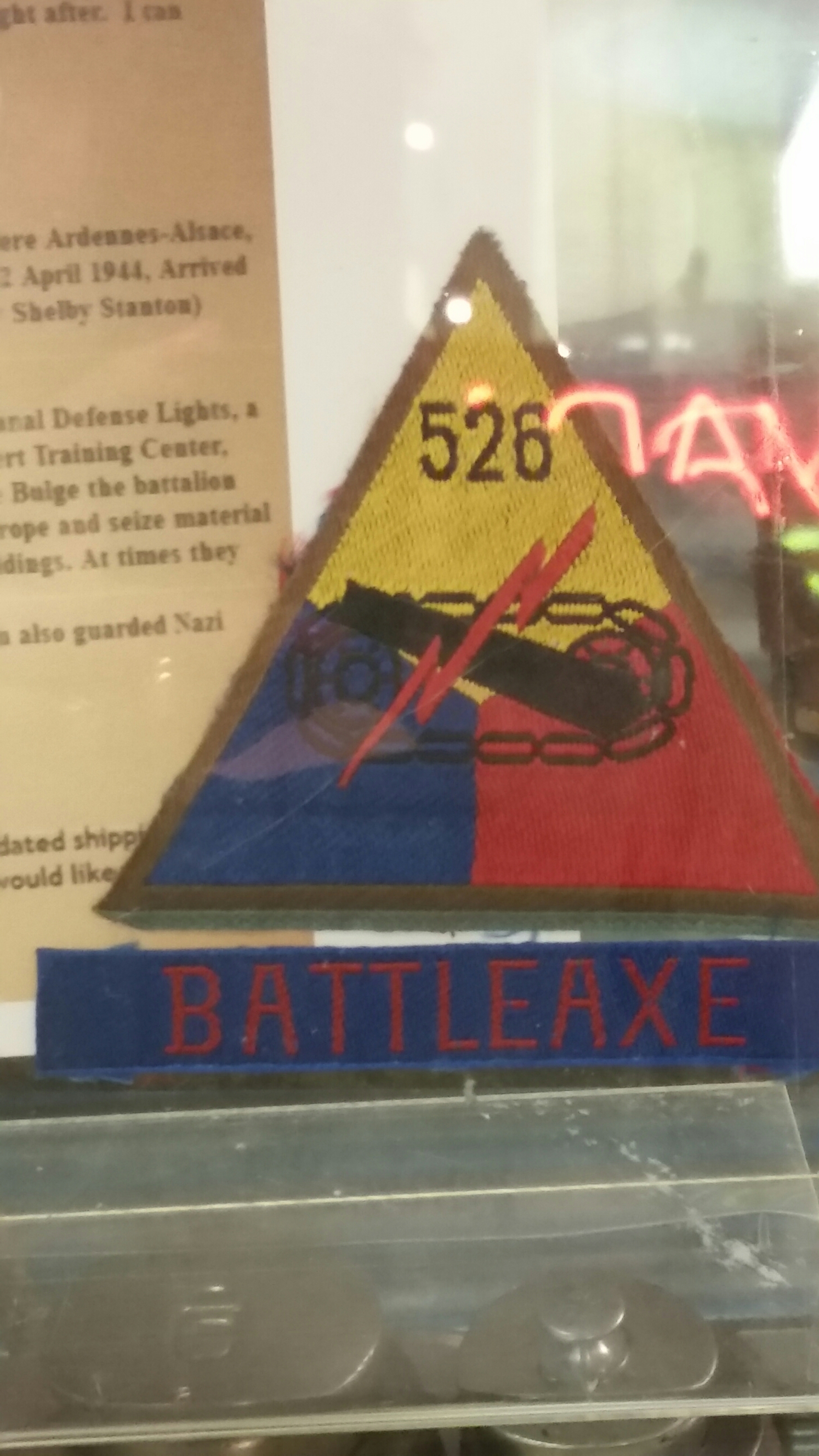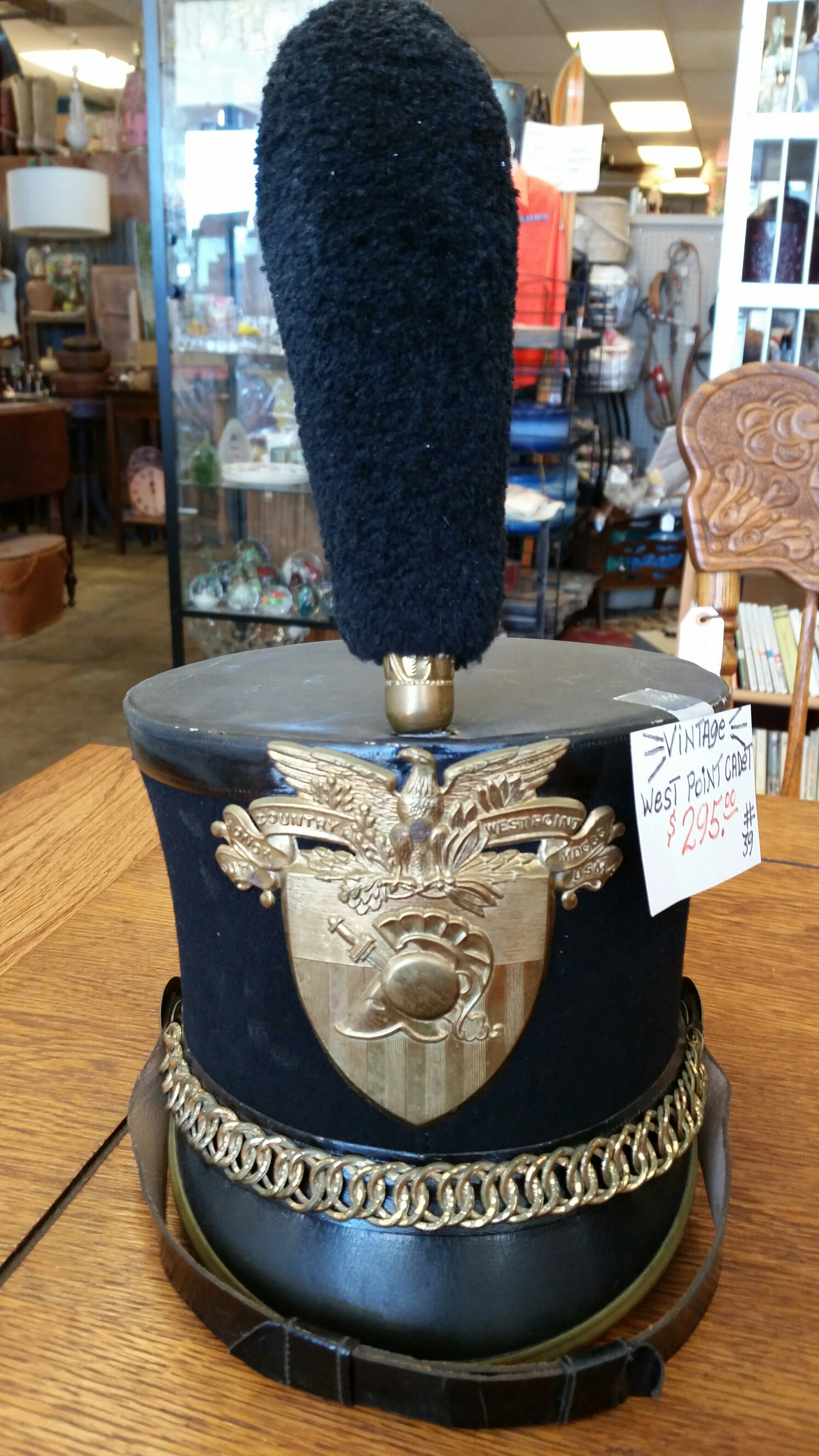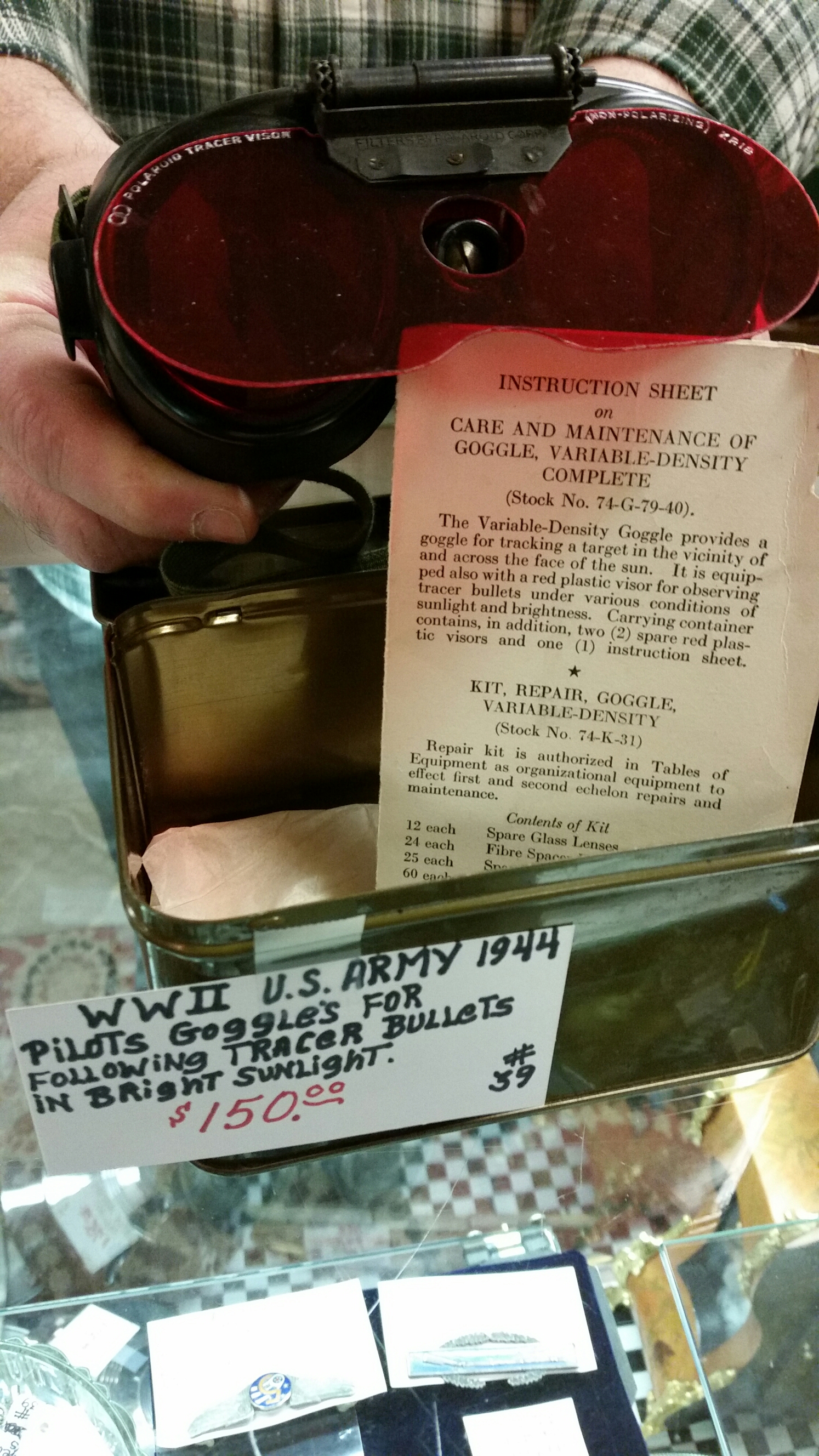Antique Military
We have a dealer who has a expansive collection of all ages and of different countries of Military items. You need to come in and see all of the different items that he has.
The need to protect the head in battle has inspired a range of solutions over the last 2,000 years, some wildly impractical, others elegantly utilitarian. Metal helmets were a part of traditional European armor as early as 400 BC, when Roman Montefortino-style helmets were introduced. These heavy headpieces came in various shapes, from a pointed, conical design topped with a plume to the more familiar “kettle hat” shape with a rounded dome and wide circular brim.
Some early helmets covered the entire head and neck, and many included a frontal grill or hole-punched faceguard for greater protection. The goal of this equipment was protection, but beauty was not sacrificed in the process. For example, by the 1st century, ornate headgear created for higher-ranking officers was often engraved with intricate floral designs or decorations resembling human hair. Helmet styles reached their peak of complexity in France during the 1800s, when the headgear for Napoleon’s armies incorporated fur, feathers, and gilt trimming.
Possibly the most distinctive military headwear is the famous Pickelhaube, designed for the Imperial German Army. First introduced in 1842, the Pickelhaube features a large gold eagle emblem above its visor and is topped with a threatening gold spike. Variations on this style were produced through World War I, some incorporating leather chinstraps or marked with specific unit decorations. The German helmet was quickly imitated by other militaries, as seen in the design of French and British headgear from the late 1800s.
During the same era, the medieval kettle hat form was adapted for the safari helmet style. Originally made from pith, a lightweight material derived from an Indian swamp plant, safari helmets were primarily used by European militaries on patrol in tropical colonies. The style was popularized after British troops wore pith helmets during various conflicts in colonial India during the 19th century.
Though headpieces grew more sensible during the 20th century, metal still provided the best protection against head injuries. The dark grey, blue, or green helmets of World War I were mostly made from steel, which was easily mass-produced. These examples include the French Adrian helmet, with its small metal comb along the top, and the German M16, whose design was prompted by a campaign from the medical community for improved head-protection.
World War II helmet styles were even simpler, mostly consisting of plain metal domes made to fit any head size. Some armies marked their helmets with painted insignia, like the infamous German swastika or SS logos, while a few continued to use more detailed brass emblems, as seen on the headgear of Spain, Holland, and Switzerland. The most common look was typified by the American M1, or “steel pot” design, which was made from a single metal sheet with a gently sloping rim. The olive-green M1 included an adjustable plastic liner and was equipped with two metal loops for a chinstrap. The M1 style was used through 1985, with the addition of camouflage canvas coverings during the Vietnam War.
Increased use of air forces in World War II also meant a proliferation in flight helmet designs. These varied from the gigantic German crash helmets, complete with protective lea…






